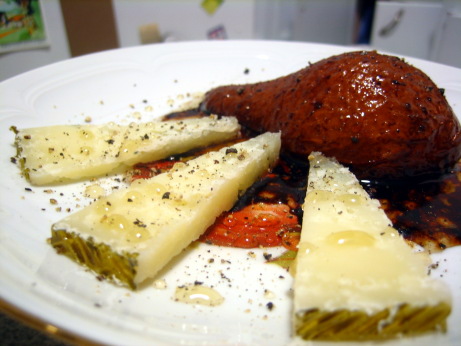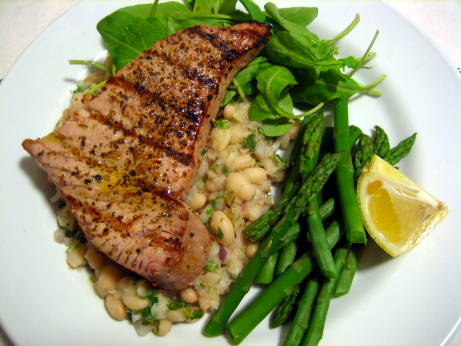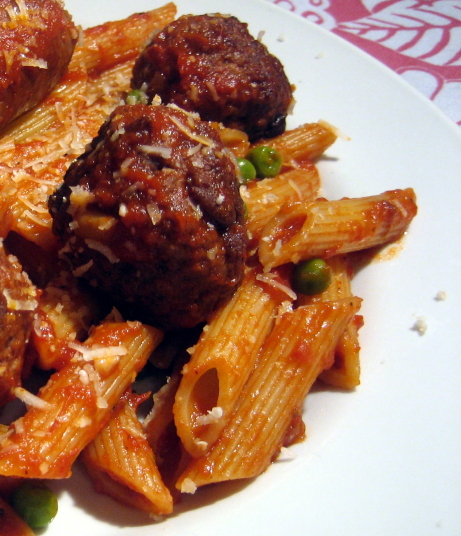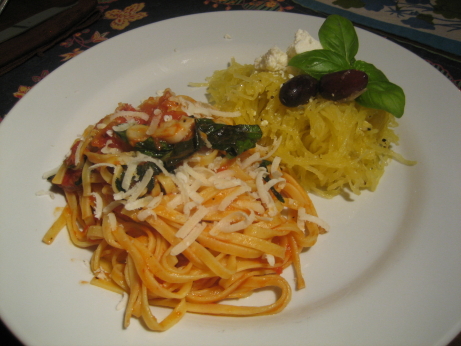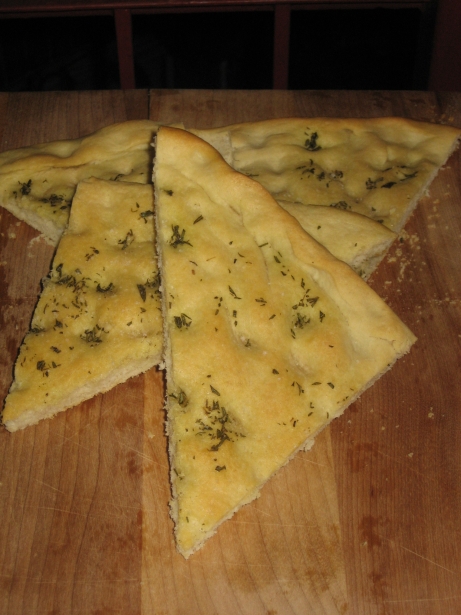This is how dessert should be, simple, elegant, and not too heavy. I’m rarely in the mood for a slice of cake right after dinner, and the yen for creamy or frozen treats is even more infrequent. However, a cheese plate is always a welcome addition to a meal. I associate this kind of dessert with Italy, almost every menu has some combination of pear and cheese, and honey is a common touch. One handwritten menu I saw there advertised the Cheese and Fear plate, I was hoping for a high concept dessert, but it was just a typo.Â
The dish is simple to prepare. You roast pears in a buttered dish for 20 minutes, then pour balsamic over-top and roast for 5 minutes more. Plate the pears, drizzle them with the juices in the pan, and serve with slices of Manchego. Drizzle the plate with honey, and a few grinds of pepper, then serve.Â
The Good:Â With hardly any effort you can create a satisfying end to a big meal. It can pretty well all be done ahead, just pop the pears in the oven while you’re clearing the dishes, and they’ll be ready once everyone’s finished up their glass of wine. The presentation is really simple, but it looks great. Pears have a great affinity for cheeses, and the balsamic glaze makes the whole interaction more appealing. The few grinds of pepper emphasize the sweet-savoury interplay of the dish.Â
The Bad: For my money, this dish could have moved a little more to the savoury side. I found the total effect of the roasted pears + balsamic + honey to be pushing the balance too far to the sweet. A more assertively flavoured cheese, or a more acidic balsamic might have brought things into balance. Also, some nuts would have been a very nice addition to the plate. Roasting pears is a delicate affair. I like them roasted so that they loose their gritty-grainy texture, but I don’t want them to turn to mush. Mine ended up a little too firm, half an hour in the oven might have served them better.
The Verdict:Â Overall I was quite happy with this dish, and I’ll certainly make variations on it again. I think disliking sweet desserts is largely my own personal issue, so it may not turn others off this dish at all. Even with a little more sugar than I would have liked it was an excellent way to finish our dinner.
